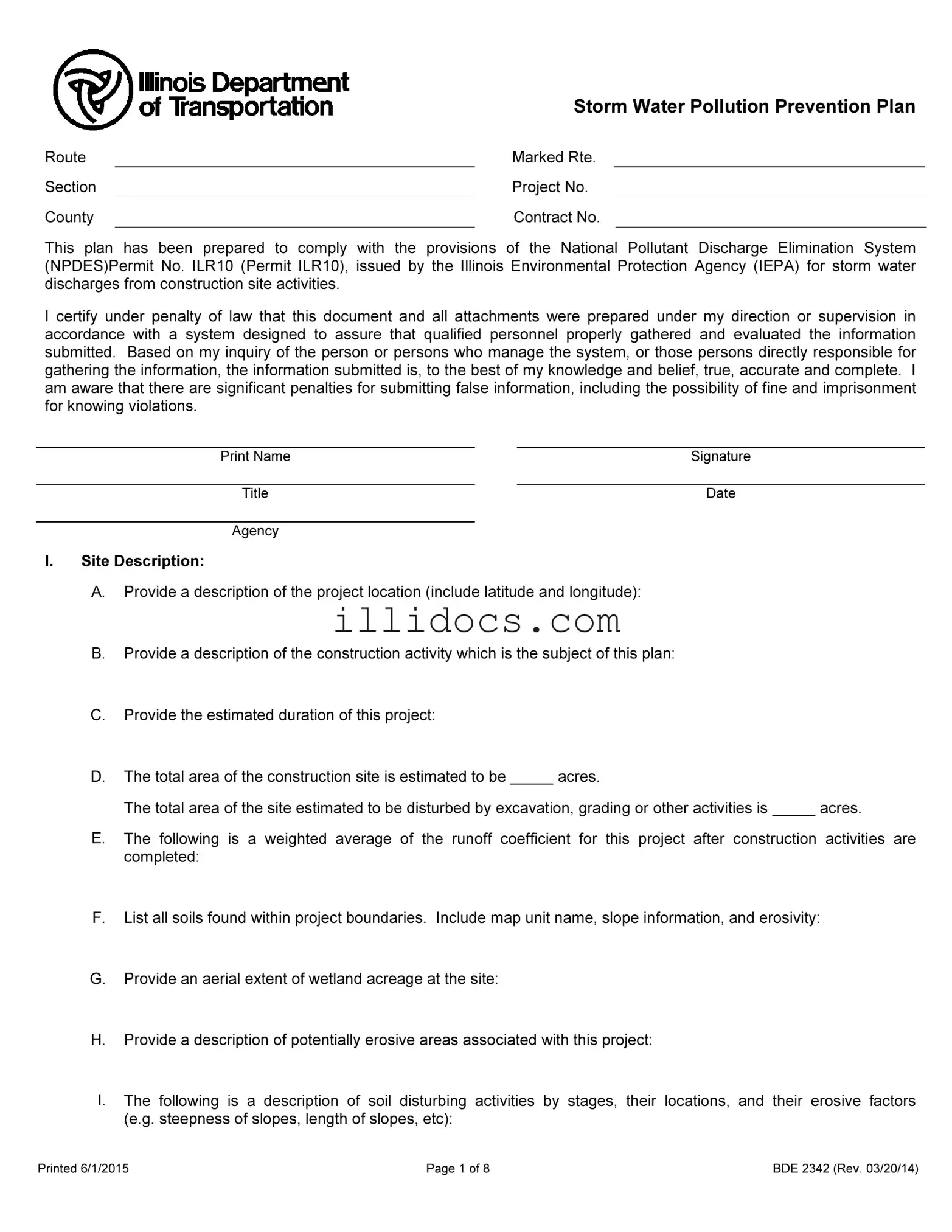What is the Illinois BDE 2342 form used for?
The Illinois BDE 2342 form is a crucial document designed to ensure compliance with the National Pollutant Discharge Elimination System (NPDES) regulations. Specifically, it addresses storm water pollution prevention plans for construction sites. By detailing the project’s location, activities, and potential environmental impacts, the form helps to minimize pollution and protect water quality during construction activities.
Who is required to fill out the BDE 2342 form?
The form must be completed by contractors or project managers overseeing construction activities that may result in storm water discharges. It is essential for anyone involved in construction projects that disturb land and could potentially impact local water bodies. This includes large-scale developments, road constructions, and other projects that require significant excavation or grading.
What information is needed to complete the BDE 2342 form?
To fill out the BDE 2342 form, you will need to provide detailed information about the project. This includes the project location, a description of construction activities, estimated duration, soil types, areas of disturbance, and any sensitive environmental resources. Additionally, you must outline erosion and sediment control measures and describe how you will manage storm water runoff during and after construction.
What are the potential penalties for submitting false information on the BDE 2342 form?
Submitting false information on the BDE 2342 form can lead to significant penalties. Individuals may face fines or even imprisonment for knowingly providing inaccurate data. It is critical to ensure that all information submitted is true, accurate, and complete to avoid these serious consequences.
How does the BDE 2342 form contribute to environmental protection?
This form plays a vital role in protecting the environment by ensuring that construction activities do not lead to water pollution. By requiring detailed plans for erosion and sediment control, the BDE 2342 form helps to minimize the impact of construction on local waterways, wetlands, and sensitive ecosystems. It promotes responsible management of storm water, which is essential for maintaining water quality.
What are some common erosion and sediment control practices included in the BDE 2342 form?
The form outlines various erosion and sediment control practices that contractors must implement. These can include temporary seeding, silt fences, sediment traps, and the use of erosion control blankets. Additionally, maintaining natural buffers around water bodies and minimizing soil disturbance are emphasized to enhance effectiveness.
Is there a timeline for implementing stabilization measures after construction activities cease?
Yes, stabilization measures must be initiated promptly after construction activities have temporarily or permanently ceased. Generally, this should occur within one day. However, if snow cover prevents immediate action, stabilization should be implemented as soon as conditions allow. For areas where construction will resume after fourteen days, temporary stabilization methods may be used.
What are the responsibilities of contractors regarding the BDE 2342 form?
Contractors are responsible for completing the BDE 2342 form accurately and ensuring compliance with its requirements. They must implement the erosion and sediment control measures outlined in the plan and provide regular updates to the Resident Engineer about any changes or maintenance needed. Additionally, contractors must submit a construction schedule detailing major activities and pollution prevention practices.
